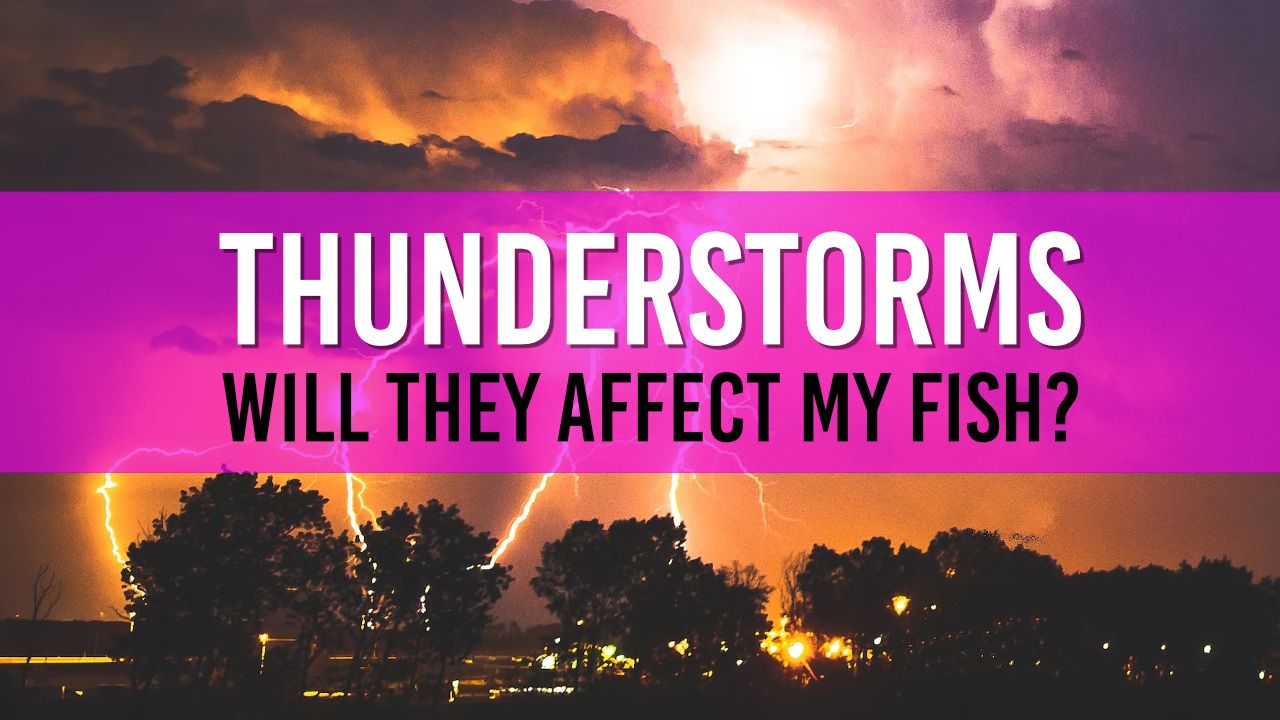Will thunderstorms hurt my fish pond?
Thunderstorms can change the water temperature and pressure in your garden pond. Generally speaking, Thunderstorms will not harm your fish - however heavy storms may cause rapid raised water levels and increased debris in your pond which could damage your water filtration.

Table of Contents
As an experienced pond owner, one of the most common concerns I've encountered is whether thunderstorms pose any risk to fish ponds. In this article, I will provide an in-depth explanation of how thunderstorms can affect your pond and its inhabitants.
Are Thunderstorms a Threat to Pond Fish?
Thunderstorms can create changes in water temperature, water chemistry, and atmospheric pressure. However, these changes typically do not cause any significant harm to your fish. Fish are quite adaptable creatures and can generally tolerate the temporary changes in their environment brought on by thunderstorms. Nonetheless, it's essential to keep an eye on your pond during and after a storm to ensure the well-being of your fish.
Changes in Water Temperature
Thunderstorms can cause a sudden drop in water temperature due to heavy rain and cooler air. While fish can usually tolerate minor temperature fluctuations, it's essential to monitor the water temperature during and after a storm. If the temperature drops too low, it can cause stress to your fish, affecting their health and appetite.
Water Chemistry
Heavy rain can cause an influx of pollutants and debris into your pond, which may alter the water chemistry. Runoff from roofs, roads, and other surfaces can introduce various contaminants to your pond, including chemicals, fertilizers, and pesticides. These changes can lead to problems such as algae blooms and decreased oxygen levels. To avoid these issues, remove leaves and debris from your pond and consider installing a filter system to maintain water quality.
Atmospheric Pressure
Thunderstorms can cause rapid changes in atmospheric pressure. Fish can sense these changes through their swim bladders, which can lead to swim bladder disease in some cases. While this is relatively rare, it's essential to monitor your fish for any signs of distress or abnormal behavior during a storm.
Lightning and Electrical Safety
One of the primary concerns during thunderstorms is the risk of lightning strikes. While it's rare for lightning to strike a pond directly, it can still cause electrical issues, such as tripping the electric box. To ensure the safety of your pond and its equipment, unplug any electrical devices, such as pond pumps and UV lamps, during a thunderstorm.
Preparing Your Pond for Thunderstorms
To ensure your pond and its inhabitants are well-prepared for thunderstorms, follow these steps:
- Keep your pond pump and filter system clean and well-maintained to handle the influx of debris and contaminants.
- Install a pond aerator to ensure proper oxygen levels in the water, especially during heavy rainfall.
- Regularly clean and replace your UV lamp to maintain water clarity and prevent algae blooms. 4. Consider adding pond plants, such as water lilies, to provide shelter for your fish during storms and to help absorb excess nutrients from the water.
- Ensure that your pond has proper overflow drainage to prevent flooding and potential damage to the pond's ecosystem.
Post-Storm Pond Care
After a thunderstorm, it's essential to inspect your pond and its inhabitants to ensure their well-being. Follow these steps for post-storm pond care:
- Check for any damage to your pond equipment, such as pumps, filters, and electrical systems. Ensure that all devices are working correctly before plugging them back in.
- Remove any debris, such as leaves and branches, from the pond. This will help maintain water quality and prevent potential issues, such as clogged pumps or filters.
- Test your pond water's chemistry and temperature to ensure that it remains within a safe range for your fish. Make any necessary adjustments to restore the water's balance.
- Observe your fish for signs of distress or abnormal behavior, as this may indicate potential health issues resulting from the storm. If you notice any problems, consult a pond professional for advice on treatment and care.
- Regularly monitor your pond in the days following a storm, as issues may take time to manifest. Stay vigilant to ensure the continued health and well-being of your pond and its inhabitants.
To Summarise
In conclusion, while thunderstorms can cause temporary changes in your pond's environment, they typically do not pose a significant threat to your fish. By taking the necessary precautions before, during, and after a storm, you can ensure the safety and well-being of your pond and its inhabitants.

